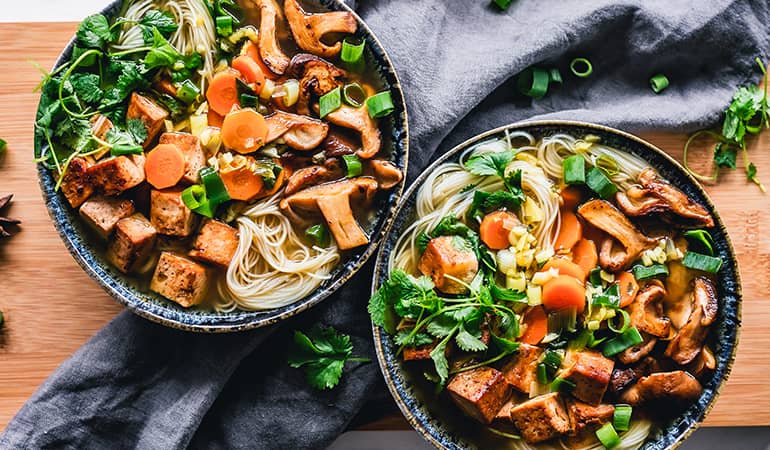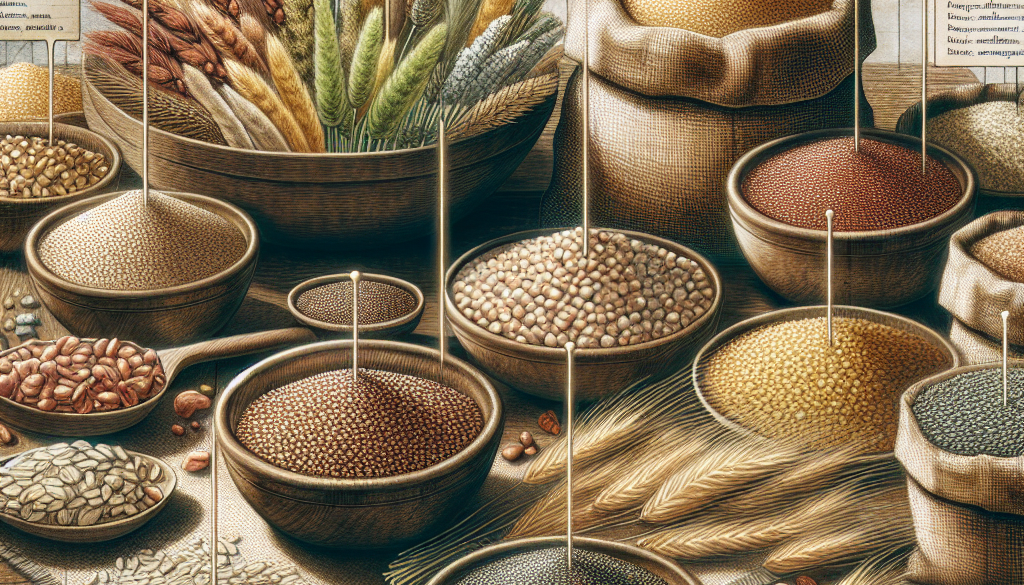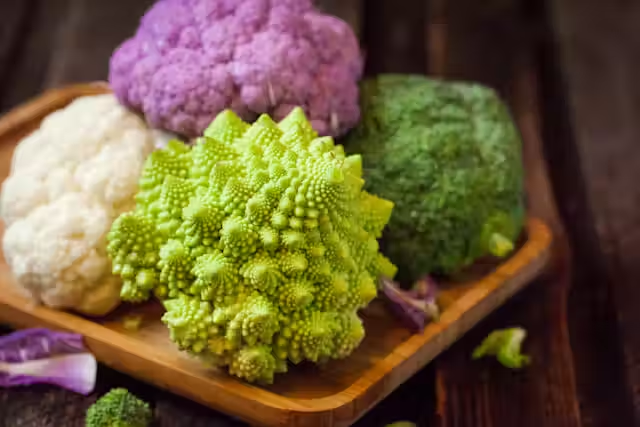
May 28, 2025
Whether you’re exploring plant-based eating for health reasons, environmental concerns, or simply looking to diversify your diet, eliminating meat, dairy, and soy might seem like a daunting challenge. The good news? There’s an incredible world of delicious, satisfying alternatives waiting to transform your meals. Far from limiting your options, this journey can actually expand your culinary horizons in exciting and unexpected ways.

Why Go Beyond the Big Three?
People choose to eliminate meat, dairy, and soy for various reasons. Some have allergies or intolerances, others are concerned about environmental impact, and many are exploring the health benefits of a more diverse plant-based diet. Whatever your motivation, the key to success lies in discovering satisfying replacements that don’t leave you feeling deprived.
The secret isn’t trying to perfectly mimic what you’re removing—it’s about embracing new flavors, textures, and cooking techniques that create their own delicious experiences.
Protein Powerhouses Beyond Soy
Legumes: The Versatile Foundation
Beans, lentils, and chickpeas form the backbone of protein-rich plant eating. Each variety brings unique flavors and textures:
- Black beans add earthiness to Mexican and South American dishes
- Red lentils cook quickly and create creamy textures perfect for curries and soups
- Chickpeas transform into everything from hummus to crispy roasted snacks
- White beans provide creamy richness in Italian dishes and hearty stews
Ancient Grains: Nutritional Powerhouses

- Quinoa offers complete protein with a light, fluffy texture
- Amaranth provides nutty flavor and can be popped like tiny popcorn
- Buckwheat delivers robust, earthy flavors despite being naturally gluten-free
- Hemp hearts sprinkle easily onto any dish for protein and healthy fats
Nuts and Seeds: Concentrated Nutrition
- Tahini (sesame seed paste) creates rich, creamy sauces and dressings
- Almond butter works in both sweet and savory applications
- Pumpkin seeds add crunch and protein to salads and grain bowls
- Chia seeds gel beautifully for puddings and can replace eggs in baking
Creative Meat Alternatives
Mushrooms: The Ultimate Umami Source
Mushrooms provide the savory depth that makes meals satisfying. Different varieties offer unique experiences:
- Portobello caps grill beautifully as burger patties or steak substitutes
- King oyster mushrooms shred into convincing “pulled pork” when seasoned and sautéed
- Shiitake mushrooms bring intense umami to Asian-inspired dishes
- Lion’s mane mushrooms have a texture remarkably similar to crab or lobster
Jackfruit: The Tropical Wonder
Young, unripe jackfruit has become famous for its meat-like texture. When seasoned properly, it creates convincing pulled pork, chicken salad, or taco fillings. The key is draining it well and building flavor with spices, herbs, and aromatic vegetables.
Cauliflower: The Shape-Shifter

This versatile vegetable transforms into countless meat alternatives:
- Buffalo cauliflower wings with crispy coating and spicy sauce
- Cauliflower steaks grilled with bold seasonings
- Riced cauliflower as a base for grain-free dishes
- Whole roasted cauliflower as an impressive centerpiece
Eggplant: Mediterranean Magic
Eggplant’s meaty texture makes it perfect for hearty dishes. Try baba ganoush, grilled eggplant steaks, or use it as a base for plant-based meatballs when combined with grains and seasonings.
Dairy-Free Delights
Nut and Seed Milks
The variety of plant-based milks has exploded beyond basic almond and oat options:
- Cashew milk creates the creamiest texture for coffee and cereal
- Macadamia milk offers rich, buttery flavors perfect for desserts
- Hemp milk provides complete protein and omega fatty acids
- Rice milk offers the mildest flavor for those with multiple allergies
Cheese Alternatives That Actually Taste Good
- Nutritional yeast provides cheesy, nutty flavors perfect for pasta and popcorn
- Cashew cream blends into rich, cheese-like sauces and dips
- Cultured nut cheeses offer complex, tangy flavors that develop over time
- Coconut-based mozzarella melts beautifully on pizzas and in lasagnas
Yogurt and Sour Cream Swaps
- Coconut yogurt provides probiotics and creamy texture
- Cashew sour cream delivers tang without dairy
- Silken tofu-based alternatives work well in both sweet and savory applications
Flavor Building: The Secret to Success
The key to satisfying plant-based meals lies in building complex, layered flavors. Here are essential techniques:
Umami Boosters
- Miso paste (look for soy-free chickpea miso)
- Mushroom powder
- Tomato paste
- Balsamic vinegar
- Seaweed flakes
Aromatic Foundations Start dishes with sautéed onions, garlic, ginger, and fresh herbs. This creates the flavor base that makes everything else taste better.
Acid and Heat Balance Bright acids (lemon, lime, vinegar) and varying levels of heat (from black pepper to chilies) add dimension and prevent dishes from tasting flat.
Texture Contrast Combine creamy elements with crunchy additions—think smooth hummus topped with toasted pine nuts, or creamy soup garnished with crispy chickpeas.
Meal Ideas That Satisfy
Breakfast
- Overnight oats with almond milk, chia seeds, and fresh berries
- Chickpea flour scramble with vegetables and herbs
- Smoothie bowls topped with hemp hearts and coconut flakes
Lunch
- Buddha bowls with quinoa, roasted vegetables, and tahini dressing
- Lentil and vegetable soups with crusty bread
- Stuffed sweet potatoes with black beans and avocado
Dinner
- Mushroom and walnut bolognese over zucchini noodles
- Stuffed bell peppers with rice, vegetables, and herbs
- Curry dishes featuring coconut milk, vegetables, and legumes
Snacks
- Roasted chickpeas seasoned with your favorite spices
- Energy balls made from dates, nuts, and seeds
- Vegetable chips with plant-based dips
Shopping and Prep Tips
Stock Your Pantry Build a foundation with dried legumes, grains, nuts, seeds, and a variety of spices. Having these basics on hand makes meal preparation much easier.
Batch Cooking Prepare large quantities of grains, legumes, and roasted vegetables on weekends. These components can be mixed and matched throughout the week for quick meals.
Experiment Gradually Don’t try to change everything at once. Introduce new ingredients and techniques gradually, allowing your palate to adjust and your cooking skills to develop.
Read Labels Carefully Many processed foods contain hidden animal products or soy derivatives. Learning to read ingredient lists becomes second nature with practice.
Nutritional Considerations
When eliminating multiple food groups, pay attention to certain nutrients:
- Vitamin B12: Consider a supplement or fortified foods
- Iron: Combine iron-rich plants with vitamin C sources for better absorption
- Omega-3 fatty acids: Include walnuts, chia seeds, hemp hearts, and algae-based supplements
- Calcium: Focus on leafy greens, tahini, and fortified plant milks
The Joy of Discovery
Perhaps the most rewarding aspect of exploring alternatives to meat, dairy, and soy is the culinary adventure it creates. You’ll discover ingredients you never knew existed, learn cooking techniques from different cultures, and develop a more intuitive understanding of how flavors work together.
Many people find that their cooking becomes more creative and interesting as they explore plant-based alternatives. Without relying on familiar proteins and dairy products, you’re encouraged to think differently about meal composition and flavor building.
Building Confidence in the Kitchen
Start with simple swaps in familiar recipes before attempting complex new dishes. Replace ground meat with seasoned lentils in pasta sauce, use coconut milk instead of dairy in curries, or try nutritional yeast on popcorn instead of cheese.
As you become comfortable with basic substitutions, you can begin exploring more adventurous recipes and techniques. The key is patience with yourself and enthusiasm for experimentation.
Conclusion: A World of Possibilities
Ditching meat, dairy, and soy doesn’t mean sacrificing flavor, satisfaction, or nutrition. Instead, it opens the door to a diverse world of plant-based ingredients and cooking techniques that can transform your relationship with food.
The alternatives available today are more delicious, accessible, and nutritionally complete than ever before. With creativity, patience, and an adventurous spirit, you can create meals that are not only free from animal products and soy but genuinely exciting to eat.
Remember, this journey is about addition, not just subtraction. You’re not just removing foods from your diet—you’re adding new flavors, textures, cooking techniques, and culinary traditions. Embrace the adventure, be patient with the learning process, and most importantly, have fun discovering all the delicious possibilities that await on your plate.
Ready to start exploring? Begin with one new ingredient or recipe this week. Your taste buds—and your body—will thank you for the adventure.